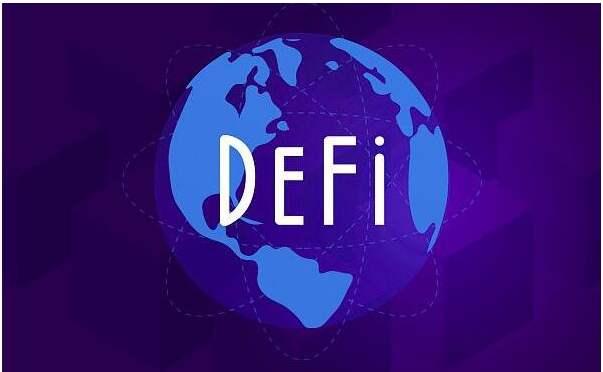Inventorying the data of decentralized derivatives trading platforms, can Layer 2 and token incentives revitalize the scarce user base?
This article was published on PANews, authored by Jiang Haibo.
Derivatives are an important link in capital flows, capable of hedging future uncertainties and stabilizing prices. In the cryptocurrency market, the trading volume of derivatives has far exceeded that of spot trading, often becoming the source of price fluctuations. Taking the Binance BTC/USDT trading pair as an example, in the first four days of this month, the average daily spot trading volume was 78,000 BTC, while the average daily trading volume of perpetual contracts was 332,000 BTC, with futures trading volume exceeding spot by more than four times.
Decentralized exchanges like Uniswap and Sushiswap have developed alongside the rise of DeFi last year, but in the derivatives space, no projects have been widely adopted. This situation may improve this year, as more projects are already receiving funding support.

Futures Trading
dYdX
dYdX was created in 2017 and belongs to the same era of products as leading DeFi protocols like MakerDao and Aave, receiving investments from Chris Dixon of A16Z, Olaf Carlson-Wee of Polychain Capital, and Brian Armstrong of Coinbase at the end of 2017. dYdX is one of the few decentralized exchanges that insists on using an order book model, employing an off-chain order book and on-chain settlement. It is also one of the rare DeFi protocols that has not yet launched a governance token after several years of operation. dYdX includes three functions: lending, leveraged trading, and perpetual contracts. Leveraged trading comes with a lending feature, where the funds deposited by users automatically form a liquidity pool. If funds are insufficient during trading, they are automatically borrowed with interest. It is important to note that currently, dYdX's leveraged trading is only friendly to users making large trades; if a single order is less than 20 ETH, users can only choose to take liquidity and must pay a high fee for small orders to cover Gas costs.
Currently, dYdX's perpetual contracts run on both Layer 1 and Layer 2, with Layer 2 utilizing StarkWare's second-layer solution, which has begun mainnet testing. Users can register with their email and Ethereum address. Using the platform now may likely yield airdrop rewards when dYdX issues tokens. In the past three months, the funds locked in dYdX have increased from $45 million to $220 million.
Perpetual
Perpetual is a new type of perpetual contract exchange that received investments in August 2020 from institutions such as Alameda Research, Three Arrows Capital, CMS Holdings, Multicoin Capital, Zee Prime Capital, and Binance Labs. It is built on xDai (an Ethereum sidechain) and is a contract exchange driven by virtual automated market makers (vAMM), initially supporting only USDC as collateral. The vAMM also determines prices based on a constant product formula. Before using the platform, users must deposit USDC into a smart contract that holds real assets. During trading, virtual assets are minted in the vAMM. For example, if a user opens a long position with 10x leverage using 100 USDC, 1000 vUSDC will be minted and placed in the vAMM, which does not hold real assets but is for convenience in liquidation.
Injective
Injective Protocol is one of the first projects incubated by Binance Labs and was launched on Binance via Launchpad. The Injective protocol consists of three parts: the Injective chain built on Cosmos, serving as an Ethereum Layer 2 sidechain solution that can extend Ethereum transactions to the Injective chain; the Injective derivatives trading protocol, allowing users to create their own derivatives trading; and the Injective trading platform, which matches trades using an order book model, with orders stored on-chain and maintained by nodes. In addition to normal trading, Injective has optimized the trading experience by using delayed random functions to prevent front-running. The Injective chain based on Cosmos can connect to other chains' products via IBC.
Kine
Kine adopts a relatively centralized trading approach, which may provide a better trading experience. Kine recently announced the completion of two funding rounds totaling $7 million, with investors including Huobi, OKEx, Blockchain Capital, Spartan Group, and Divergence Capital. On the afternoon of March 8, Kine announced the start of public testing on the Kovan network.
Kine combines on-chain custody of funds in DeFi with the user experience of centralized exchanges, employing "on-chain staking and off-chain trading" and the "Peer to Pool" trading method promoted by Synthetix, allowing trading users to have unlimited liquidity and zero slippage. Liquidity providers add funds to form a liquidity pool, becoming counterparties to trading users. Liquidity providers will also share trading fees and receive KINE token rewards. Since trades in Kine occur off-chain, they are not significantly affected by the performance of public chains. Currently, Kine hopes to wait for Layer 2 technology to mature and may launch Layer 2 in the second quarter.
Options Trading
Opyn
Opyn is a decentralized options trading platform built on Ethereum, allowing users to hedge against price volatility. Paradigm, Dragonfly, 1kx, DTC Capital, and the founders of Synthetix and Aave have all participated in the project's investment. Opyn is built using the Convexity Protocol, which allows users to create put and call options. Users can only buy and sell options with predetermined products, expiration times, and strike prices.
The options sold on Opyn are European options, which can only be settled at expiration. All products are priced in USDC, and option sellers must pledge 100% of the margin to mitigate market risk, receiving corresponding oTokens to sell. For example, if one wants to sell a put option for 1 WETH at a settlement price of 1800 USDC with an expiration date of March 12, they would need to collateralize 1800 USDC, generating 1 oWETHP, and upon selling, receive an option fee of 171 USDC. If the option expires with the WETH price below 1800 USDC, users holding the corresponding oToken can exercise the option and receive the difference between 1800 USDC and the ETH price.
Hegic
Hegic addresses the liquidity issue of options products through liquidity pools. Although it does not have well-known institutional investors, it has gained popularity due to promotion by Andre Cronje, the founder of YFI. Andre once tweeted that YFI's machine gun pool consists of single-coin lossless mining strategies, which are not conducive to generating returns for the liquidity pool, and in the future, he will consider using Hegic's options strategies to help YFI achieve more returns.
Currently, Hegic only includes options for BTC and ETH. Users can provide funds in Hegic to form liquidity pools, which will be used to automatically sell call and put options, becoming counterparties to buyers. Therefore, providing liquidity in Hegic entails taking on the risk of selling options while also enjoying the profits from selling options.
Conclusion
Compared to a year ago, there are now more decentralized derivatives protocols launched, and the three major exchanges in China have also laid out perpetual contract DEXs. However, the number of users is still very low; even the largest dYdX had only 79 users trading 279 times in the past 24 hours. This situation may improve after dYdX launches mining.
Additionally, for the high-frequency trading of perpetual contracts, dYdX, Perpetual, and Injective have all begun adopting Layer 2 solutions, while Kine is also expected to migrate to Layer 2 in the second quarter.










